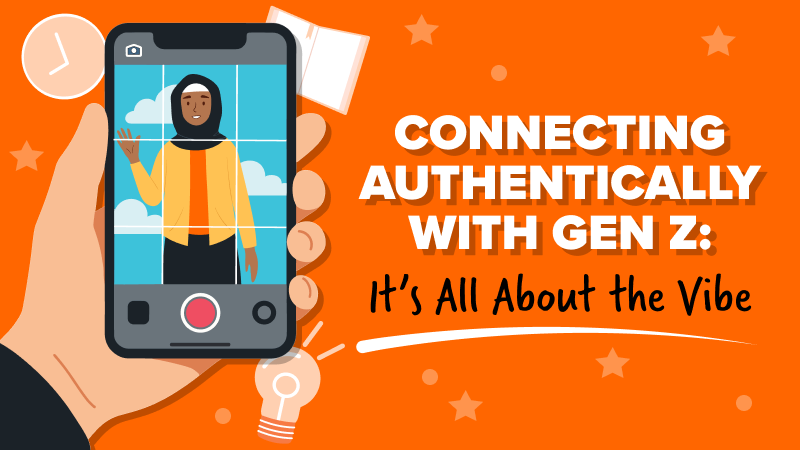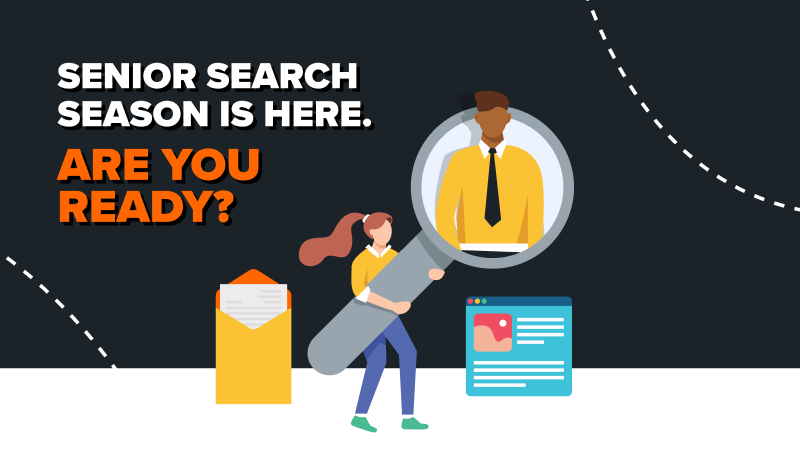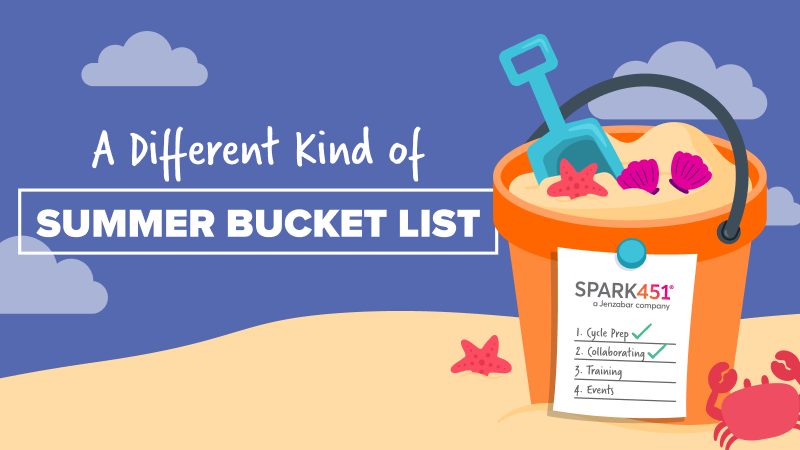Videos That Vibe
To earn a spot on Gen Z’s screen, higher ed marketers need more than great visuals; they need real stories, told in the way Gen Z expects. After all, Gen Z grew up surrounded by digital content, and they’re experts at spotting what feels real and what doesn’t. They care about authenticity, creativity, and content that actually speaks their language, rather than marketing that’s simply trying to sell them something. In higher ed, where the enrollment journey often starts with broad awareness campaigns, there’s a major opportunity to make a meaningful first impression through short-form content that feels personal and engaging. With the help of student ambassadors and interns, we can make content that fits the bill, and hooks a prospective student by allowing them to see themselves in another student’s shoes.
Platforms like TikTok, Instagram Reels, YouTube Shorts, and Snapchat are where Gen Z naturally spend their time — and they expect content there to match their vibe. While each platform has its own personality, one thing holds true across all of them: the content that resonates most is fun, honest, and often student-created.
Video Inspo
If you’re looking for inspiration, take a peek at the following:
A quick day-in-the-life video from a student showing the real ups and downs of campus life can be more powerful than a scripted testimonial.
An on-trend video made to showcase students having genuinely fun times together on campus makes your institution shine bright with authenticity.
A fun, spirited highlight reel of a campus event, filled with real emotion and student voices, brings energy that traditional ads can’t replicate.
A catchy trending audio + a real student moment = instant vibes. This kind of UGC grabs Gen Z’s attention fast…and makes your campus feel like the place to be.
Now the real magic comes when these authentic moments are adapted and shared across multiple platforms. That same day-in-the-life TikTok can easily be repurposed as a YouTube Short or Instagram Reel with just a few adjustments to fit the tone of each channel. This kind of cross-platform approach doesn’t just make content creation more efficient, it helps reinforce your brand message. When prospective students see a familiar tone and story across platforms, it builds recognition and recall. Consistency in visuals, messaging, and voice helps create a strong digital presence that sticks.
From Inspo to Reality
Before you begin, it’s important to understand which platforms students are using. According to a survey of teenagers’ use of social media carried out by Pew Research, YouTube is still the most-used platform among U.S. teens, with 90% saying they use it and 73% using it daily. TikTok isn’t far behind—63% of teens use it, and 58% do so daily, based on Pew’s data.
And then there’s Snapchat, which often gets overlooked but shouldn’t be. Snapchat’s own data shows that nearly half of its daily users aged 16 and up don’t use TikTok every day — yet 60% of Snapchat users over 18 are also daily TikTok users. That tells us Snapchat has a unique and sizable audience we can’t afford to miss.
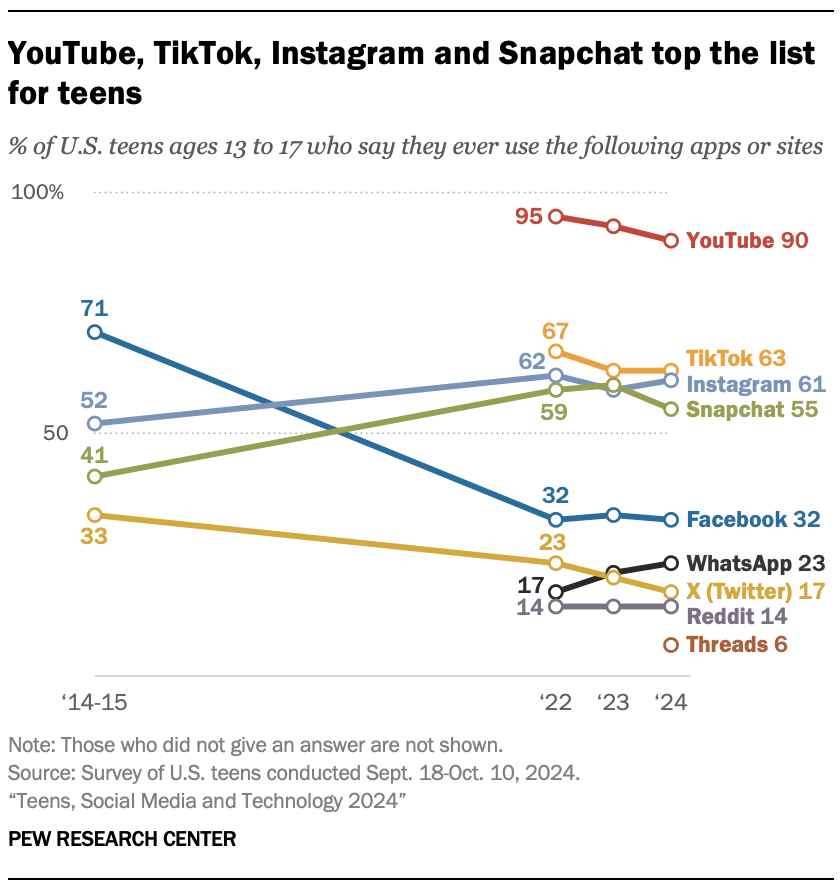
Now that we know where the students are, it’s time for us to start showing up. But not just showing up — showing up in the right way. Content should feel human, honest, and centered on real student experiences. While there’s absolutely still a place for high-production video, especially further down the funnel, the early stages of engagement should be about connection. Real moments, student voices, and consistent storytelling across platforms are what creates familiarity and sparks interest to “follow” and engage in the early days (i.e., sophomore, junior, even early senior year for some!). When we focus on showing up authentically, we’re providing opportunities for students to picture themselves as part of something real, taking us beyond marketing to building real connections that can lead to enrollment.
Let’s Do This
There’s still time to master this cross-platform, authenticity-driven (or, vibes-driven) search strategy, so don’t just settle for reusing existing ad content from last cycle. Let the team at Spark451 help guide you through the planning, strategy, and execution of what it takes to up your institution’s social channels to drive critical funnel goals for the upcoming year! Reach out today and connect with one of our enrollment marketing and digital media strategists to learn more!
Senior Search Season Is Here. Are You Ready?
For many enrollment and marketing teams, the transition into summer doesn’t mean a slowdown, it just means the fires you’re putting out have changed shape. Instead of a race to get deposits, it’s now a race to reduce melt; the energy you put toward admitted student days is needed for summer visits and fall travel prep. Tracking down high school transcripts has flipped to tracking down all. those. new. student. forms.
With teams being pulled in so many different directions, it can feel nearly impossible to pause and plan ahead for the next cycle. But you must! And the earlier you’re able to start analyzing and strategizing, the more time you’ll have to implement thoughtful, well-crafted, and personalized campaigns.
To help you get started, we’ve put together 3 ways you can make sure your next senior search campaign is a success:
1. Don't Forget Your Primary Markets
While it may be tempting to cast a wide net, don’t do so at the expense of your backyard. We recommend leaning into primary markets and letting data guide your list purchases (especially when you’re looking to expand). Use modeling to help build a list focused on the students you know will not only apply, but also show up next August.
✅ Prioritize the students most likely to engage
✅ Avoid wasting resources on low-interest prospects
✅ Set up your team for better conversion rates later in the funnel
Case Study: A small Catholic college in the Northeast* has seen a 22% increase in applications, 7.5% more deposits, and purchased 26% fewer names after partnering with Spark451 to reassert itself in the local market through branding, lead, and application generation campaigns.
2. Up Your Communications Game
Today’s students are much more reticent about sharing personal information, so when they do, they expect more than a generic “Hi, {{Preferred}}!” outreach. They’re looking for content that reflects their interests, matches their stage in the journey, and helps them see whether your school is a good fit. In short, they want to know you’ve been paying attention.
✅ Segment your messages by academics, geography, or student interests
✅ Plan out multiple touchpoints across print, email, and digital
✅ Build in moments that create connection through personalization
Case Study: A rural campus in a large public university system* saw a 26% increase in applications in year one, and a 38% increase in deposits in year two after partnering with Spark451 to flip the script with its communications, embracing and promoting its unique vibe and small size as assets, not hindrances.
3. Think Multi-Channel From the Start
It’s no secret that students consume information across a range of platforms (often simultaneously), so to stay top of mind, your campaign needs to meet them where they are and offer a consistent, compelling experience across channels.
We’ve found that a combination of print, email, and digital works best, promoting stronger engagement and better outcomes. The key? Consistency! Your creative, messaging, and calls to action should all feel cohesive no matter where students encounter them.
✅ Ensure creative and messaging are aligned across the board
✅ Use digital ads and social media to reinforce emails and direct mail
✅ Keep track of all cross-channel performance
Case Study: A private liberal arts college in the South* saw a 22% increase in admits and a 33% increase in deposits after partnering with Spark451 to conduct a comprehensive multi-channel senior search campaign.
Final Thoughts: Reflect and Plan
We understand that one of the biggest challenges you may face is simply finding the time to do this work. When schedules are packed and priorities seem to constantly shift, it’s tempting to rush the process or simply reuse old strategies without much, if any, reflection. But taking time now to review what worked last cycle (and what didn’t!) can save you time and effort down the road.
Before you get started, ask yourself:
- Which lists yielded the strongest engagement?
- Which messaging resonated best?
- Where might we want to try something new?
- Who is going to tackle this work?
Do we have the resources we need or do we need support from a professional partner?
Even if your team is small or its bandwidth stretched thin, taking small steps now can make a big difference moving forward.
Need a hand? At Spark451, we work with colleges and universities across the country to design, build, and execute student search campaigns that get results. If you’re feeling overwhelmed by what’s on your plate, give us a shout. We’re happy to help however we can!
*Partner names withheld for confidentiality purposes.
The Top 5 Web Design Trends Worth Following
In the world of higher education marketing, your website is more than just a digital brochure — it’s the front door to your institution. Except it’s 2025, and that front door is expected to have a built-in AI virtual assistant that not only provides relevant information when prompted, but personalizes that information and prompts you to learn more. That’s some front door, huh? While unfortunately we aren’t in the business of high-tech door installations (not currently, at least), we are certainly in the business of delivering thoughtful content and design strategies focused on engagement in both the digital and real-world spaces.
All jokes aside, much has changed in the few short years since our last Web Design Trends blog and, admittedly, we’re overdue… but in that time we’ve researched and worked with many new tools, and are excited to finally share all we’ve learned with you.
As you prepare to invite and welcome new students to your institution this fall, it’s imperative to take time to consider how well your website is serving its visitors and you, and use that information to drive performance improvements. Prospective students expect more than just flashy pages, and they certainly don’t have the patience for fluff or marketing lingo — they’re looking to get to the point, and fast. They want speed, personalization, and meaningful interaction, so they can get back to recording their next viral dance routine on TikTok. That’s where our five key web design trends for 2025 come in — along with a couple of extra-credit tips you’ll want to always keep top of mind. Get your coffee ready, and let’s dive in.
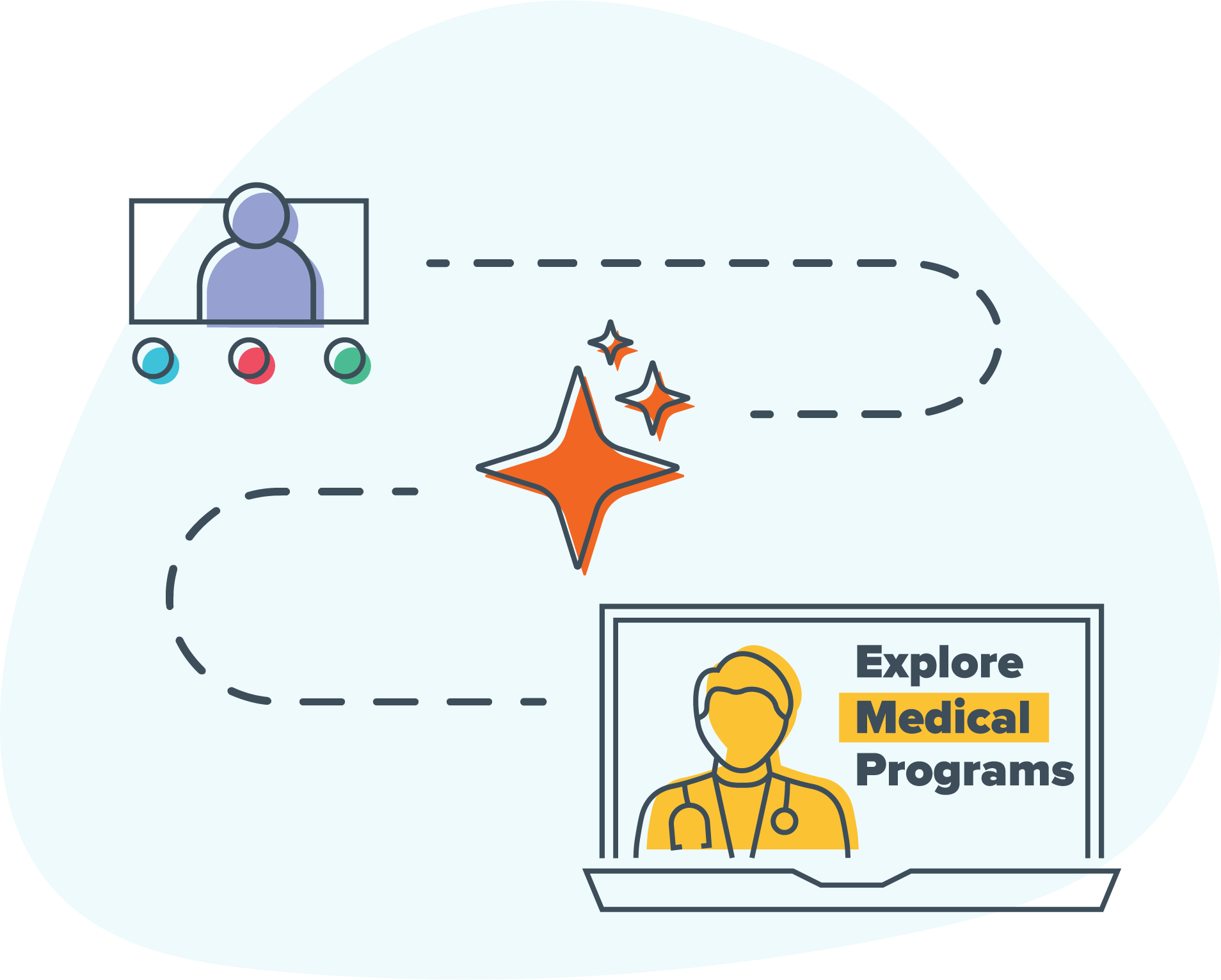
Trend 1: AI-Driven Personalization for Prospective Students
Let’s kick things off with the big one, AI. I could’ve saved this for last to really get you invested and scrolling, but I just couldn’t contain myself.
AI-driven personalization lets your site adapt to the user, surfacing relevant academic programs, events, or financial aid info based on their behavior — exactly what today’s prospective students are looking for. This personalization is achieved by utilizing what’s called behavioral tracking. Sounds pretty tech-y, huh? Well, it is — but you can easily set yourself up for success by implementing a few commonly used tools and preparing your site to dynamically serve up content. Let’s start with the basics.
What is Behavioral Tracking?
Behavioral tracking refers to the process of monitoring and analyzing how users interact with your website or digital content. It collects raw data points like:
- Pages viewed
- Time spent on each page
- Clicks on CTAs or forms
- Scroll depth (how far down a page the user scrolls)
- Return visits and session frequency
- Navigation paths (e.g., from homepage to academic programs)
AI systems use this data to make smart, real-time decisions. Without tracking what users are doing, AI has nothing to learn from. In higher ed, this insight helps you understand what prospective students are most interested in — whether it’s financial aid, campus life, or specific academic programs.
In order to collect this data, your site will need:
- Cookies (small data files stored in a user’s browser)
- Pixels embedded in your site
- Analytics platforms that aggregate and visualize user behavior
- Session recordings and heatmaps (optional, for visual insight)
- A clear and visible privacy policy
- CMP (Consent Management Platform) tech for allowing visitors to opt out of tracking (such as OneTrust, TrustArc, and Cookiebot)
How to Put AI to Work
This is when the real magic happens. Use AI-powered tools like HubSpot CMS or Salesforce Interaction Studio to automatically adjust the content the student sees based on their behavior.
Here are a few examples:
- Homepage: Dynamically swap out those eye-catching headlines to something like “Explore Nursing Scholarships” for a user whose data profile indicates an interest in nursing. Push that even further by swapping out generic images with visuals of student nurses in action.
- Program Pages: Promote related minors or certificates (e.g., public health, social work), and feature student testimonials relevant to the visitor’s interests.
- Returning Visitors: Show personalized CTAs like “Schedule a Virtual Tour of Our Health Sciences Building,” remind them where they left off so they can continue exploring, or suggest joining an upcoming health sciences info session.
It’s important to note that available AI tools will vary depending on the capabilities of your institution’s platform (WordPress, Drupal, etc.), but having the aforementioned analytics in place will at least help you track that data so you can utilize analytics dashboards for robust, top-down insights.
Other AI Integrations to Enhance User Experience
A new class of AI tools allow you to embed LLM query engines directly into your site, allowing users to receive direct answers to their questions rather than a series of links (which a search engine would normally deliver). These powerful tools have names like “knowledge or discovery engines” and are a great way to embed AI into your web experience. They can be a good complement to AI chatbots, which allow interaction at an operational level with your organization and not just the site’s content.
Privacy Considerations
In most cases, platforms will assign anonymous user IDs, so you can follow a user’s journey across multiple sessions, and then de-anonymize them once they fill out a form or log in. However, since behavioral tracking involves personal data, you must:
- Comply with FERPA, GDPR, and CCPA regulations
- Display clear cookie banners with opt-in consent
- Anonymize data when possible
- Use secure data storage and ensure third-party tools follow proper compliance
Always communicate how a person’s data will be used and give them a choice to opt-out if they don’t want to share usage data or personal information.
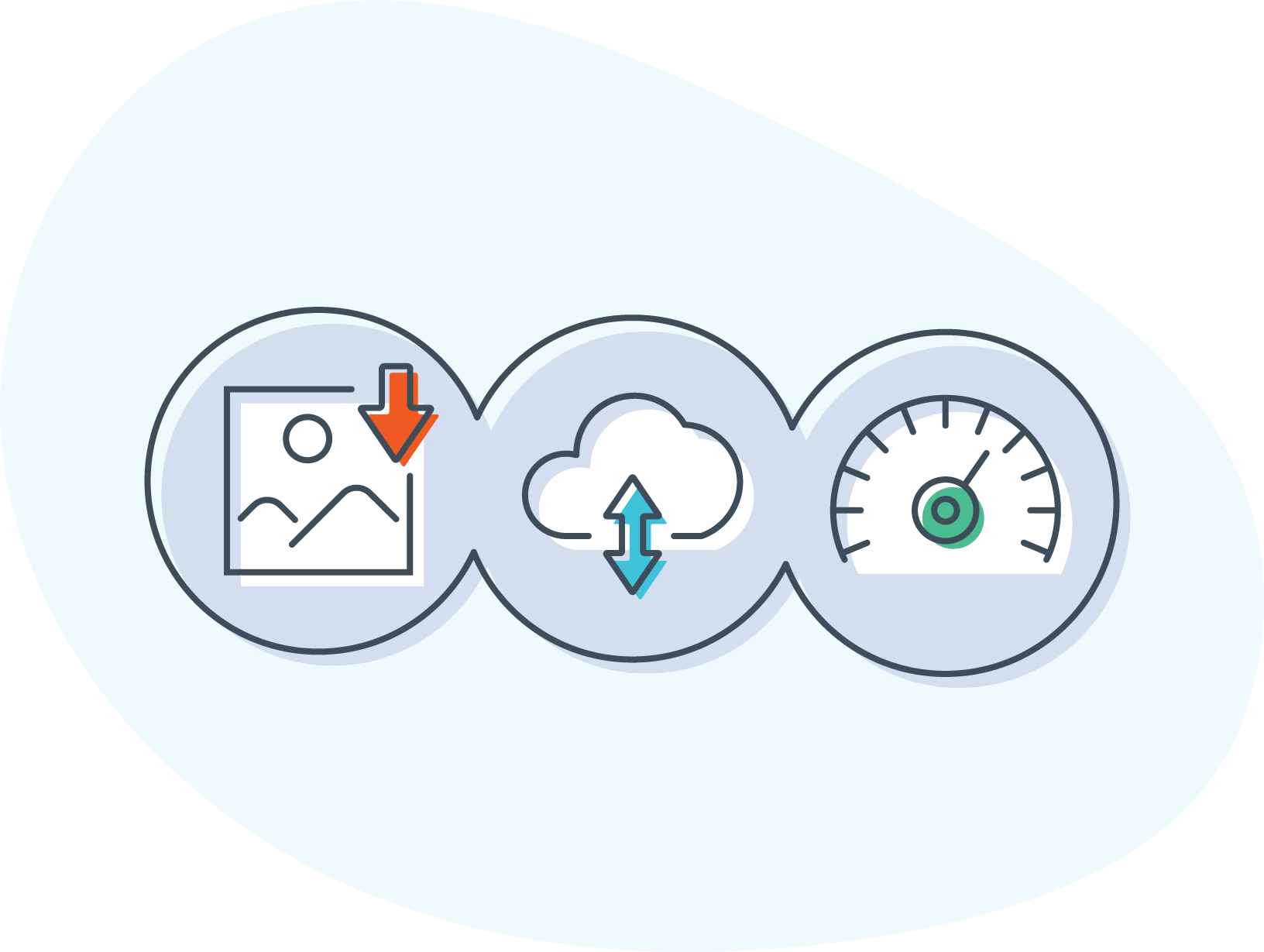
Trend 2: Performance-First Design for Mobile & Beyond
Students aren’t waiting for your photo carousel of campus shots to load — and Google’s Core Web Vitals says neither should you. Mobile-first, performance-focused design improves not only UX but also search rankings. This is standard practice these days, but you would be surprised by how often we see these considerations being ignored. They have a humungous impact on your ranking with Google, and if you’re not taking that seriously then… well, you’re reading this blog, so I imagine you take this stuff seriously. Nice job, reader!
Best practices:
- Compress images. We recommend using WebP (.webp), which is supported by modern browsers. Some platforms have built-in tools or plugins that will convert newly uploaded files to WebP, so fret not!
- Lazy-load noncritical assets. Let ‘em load once the user reaches that section or clicks the play button on the video, not on initial page load. This may need to be hard-coded in the template and/or building blocks of your site, or it could be added via a plugin depending on the platform.
- Prioritize server speed and CDN delivery for global access. Your site could have the most optimized images and all the cutting-edge tech to keep it snappy under the hood, but if the server can’t handle it and all of the site traffic, then you might as well have just sent out a brochure instead. Invest in a good cloud-based server and caching system; you won’t regret it. Cloudflare, AWS (Amazon Web Services), Google Cloud, and DigitalOcean are a few commonly used services.
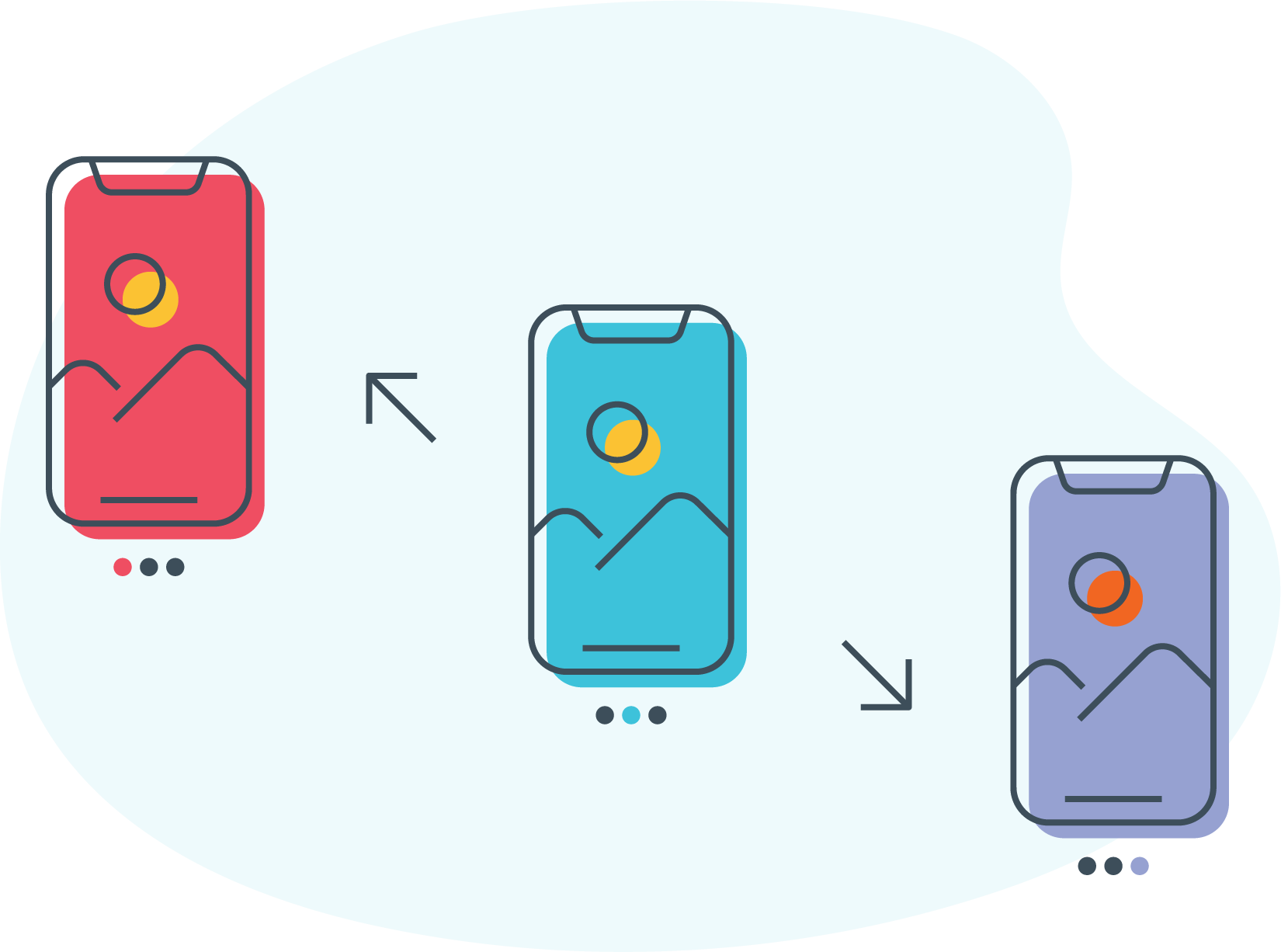
Trend 3: Interactive Storytelling With Scroll-Triggered Animations
Trends #1 and #2 are more like must-haves, whereas Trend #3 is more of an actual trend. What we’ve seen is that Gen Z responds to experiential content, and storytelling via scroll animation is a powerful way to lead them through your campus life, outcomes, or student journeys without walls of text. If you consider how much they are used to scrolling through bite-sized content, this is kind of a no-brainer. Keep in mind, it takes a well-thought-out strategy and good storytelling to get this right, so investing time and resources is key and can be well worth the effort.
Best practices:
- Keep animations purposeful. Avoid overuse and be strategic in placement.
- Tell one story at a time. Keeping this aligned will deliver more impact.
- Make sure animations don’t interrupt keyboard navigation for accessibility purposes.
A few tools to consider:
- LottieFiles for lightweight, accessible animations.
- Webflow for no-code interaction design. Webflow has totally reinvented itself, and is now a major player in the web design space.
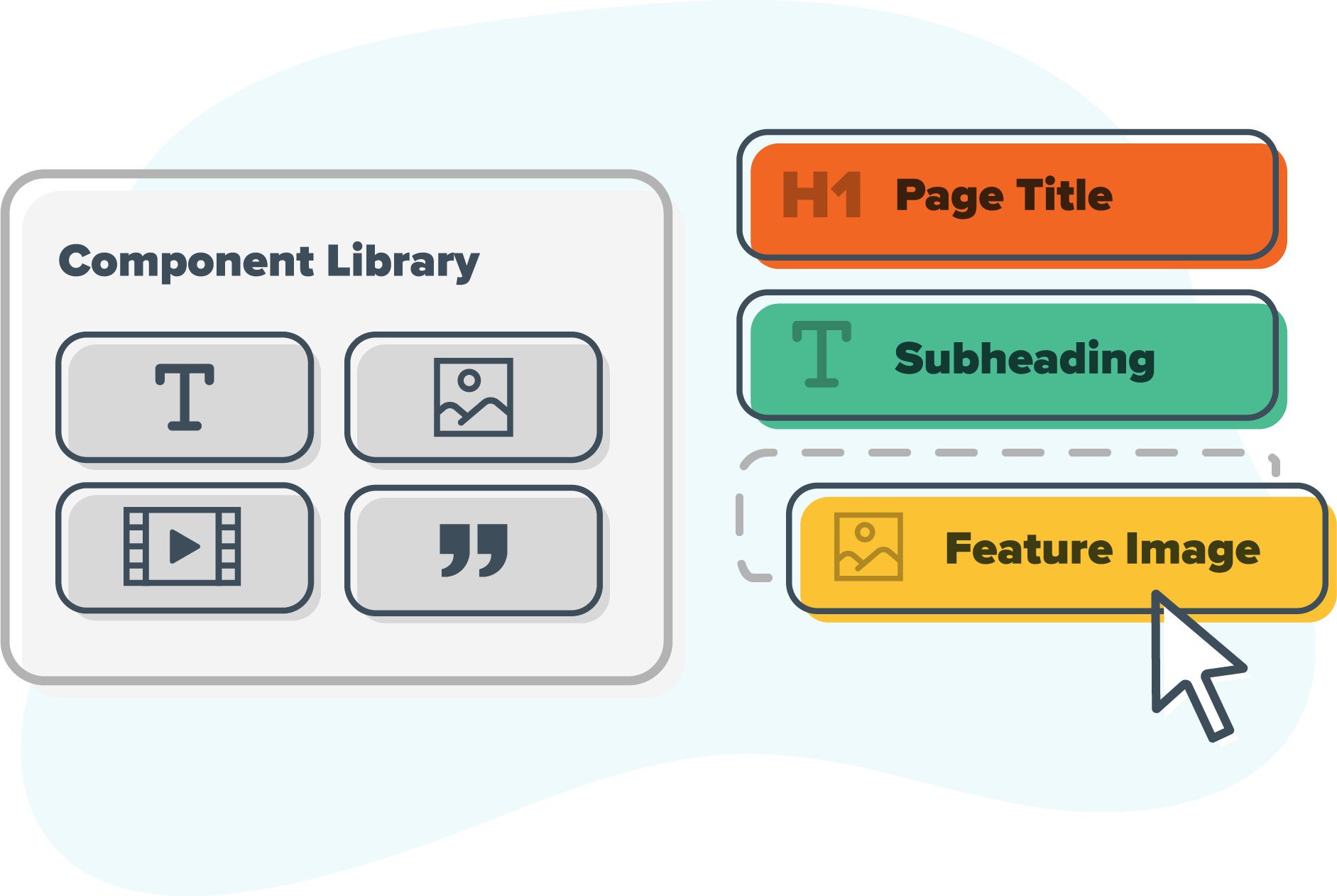
Trend 4: Elevated Design Systems With Modular Components
From admissions to academic departments, university websites tend to grow… fast. A modular, component-based design system ensures brand consistency and makes updates easier across departments and microsites. This has been Spark451’s approach to web design builds from the get-go, so we fancy ourselves the experts. This design system keeps sites flexible, dynamic, and easier to manage and troubleshoot. We also find that our clients have a much easier (and fun) time building out pages on their own with this method.
Best practices:
- Build reusable content blocks that tie into data types, so you can dynamically fill pages with content (e.g., faculty bios, testimonials, program descriptions).
- Document components in a style guide. This will keep things consistent, and ensure you stay that way when involving other stakeholders.
- Train campus content managers to use the system properly. Come up with a template of sorts for specific pages, so that they know what is needed. One bonus of this is that your visitors will know what to expect when they come across similar pages, since the formatting is the same!

Trend 5: Emotion-Driven Color Palettes and Typography
This one’s for my fellow web designers out there. Today’s students are looking for vibe and values. Strategic use of brand colors and expressive typography help convey your school’s personality while reinforcing emotional resonance, especially on landing pages and campaign microsites that get a lot of traffic.
Best practices:
- Avoid overuse of shadows and skeuomorphic elements. (It’s giving 2010s vibes.)
- Stay on brand at all costs! Avoid trends that clash with brand identity. (Cringe.)
- Use typography to emphasize hierarchy and key information: consider font weight, size, style, and color contrast. (That’s low-key typography 101.)
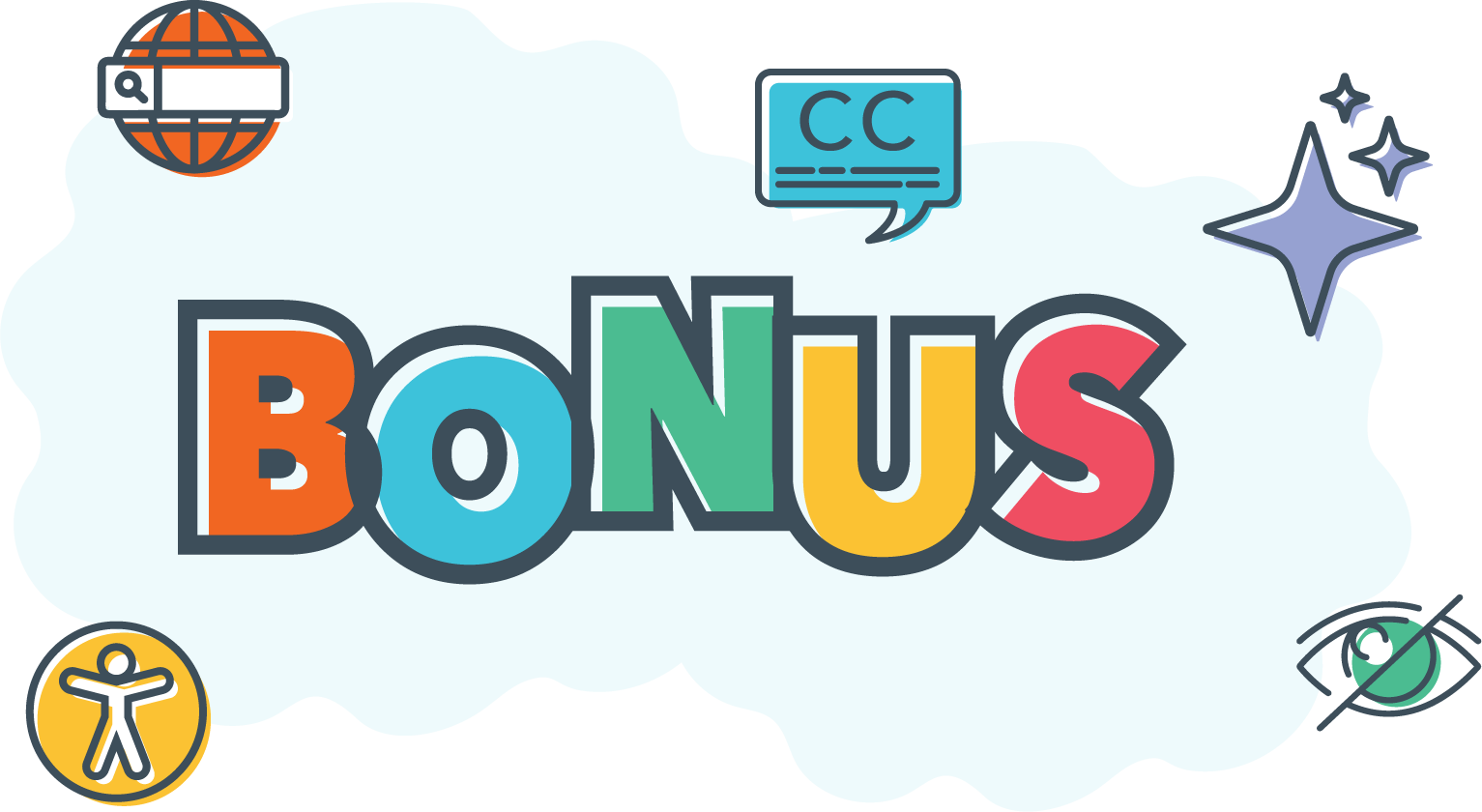
Bonus Nonnegotiables
Nonnegotiable 1: Accessibility
Accessible design isn’t just inclusive — it’s essential for compliance and SEO. Ensure your site meets WCAG 2.1 AA (soon to be WCAG 2.2) standards and works for screen readers, keyboard navigation, and colorblind users. We take this seriously and bake it into all of our website builds, so feel free to reach out to us for guidance on this topic.
Our top tips:
- Use semantic HTML and ARIA labels.
- Don’t rely solely on color to convey information. Those who are colorblind may have a negative experience trying to read text on certain backgrounds.
- Do real testing with screen readers.
- Audit your site regularly with axe DevTools or WAVE, or use platforms like Siteimprove to help you identify red flags.
Nonnegotiable 2: Search Engine Optimization (SEO)
SEO isn’t just about keywords — it’s about site structure, performance, and accessibility, all working together. In 2025, optimizing for search means optimizing for users. Don’t think Google doesn’t see your stuffing of random keywords into alt text or adding invisible H1s across your page, because it does, and it will penalize you for it.
Best practices:
- Create descriptive URLs and meta titles.
- Optimize alt text on every image — and don’t use background images for non-decorative content.
- Avoid generic file names for images and videos like “video-1.mp4” and “screenshot-01-01-2025.png.” Come up with a naming convention that is descriptive yet concise. Bonus: This will help you keep assets organized as well!
Tools to consider:
- Yoast SEO (for WordPress sites)
- Google Search Console (for real-time monitoring)
Nonnegotiable 3: Answer Engine Optimization
An emerging and related consideration is “answer engine optimization” (AEO). As users shift from typing keywords into search bars to asking AI assistants like ChatGPT, Google’s SGE, and Perplexity for direct answers and recommendations, your site isn’t just being indexed, it’s being interpreted, summarized, and answered from. And while the rules for AEO and SEO are similar, there’s a tendency to prefer content that delivers authoritative references (e.g., faculty authorship) and natural language Q&A to help deliver “answers” over links.
Lean on Industry Expertise
As higher ed marketers, we’re not just designing websites — we’re shaping prospective students’ first impressions and helping them envision their futures. Whether you’re rolling out a full redesign or just refreshing a campaign landing page, these trends offer smart, future-forward ways to connect more deeply with your target audience.
If your site could use a tune-up or a strategic overhaul, just reach out, and Spark451 can help.
A Different Kind of Summer Bucket List
Summer is here, and with it — summer bucket lists! You know what we’re talking about… all the wonderful things we want to do while the weather is warm and the days long. At the top of that list always seems to be “go on vacation!” but, since we can’t take the whole summer off (disappointing, we know), we’re here to provide a different type of summer bucket list: the get-your-CRM-ready-for-the-cycle-ahead list!
So put on your favorite music, pour a cold drink (iced coffee, anyone?), and get ready to dive in.
Bucket List Item #1: Cycle Prep
You’ve likely already gotten started on this one, but just in case you haven’t, we’re here to remind you: The time to start cycle prep is now! This critical process is key to a successful and smooth transition to the new recruitment cycle, so don’t put it off any longer. Not sure where to start? Check out our previous blog posts for comprehensive lists of action items:
Spark451’s Guide to Slate Cycle Prep
Essential Cycle Prep for All CRMs
Pro Tip: Cycle prep is an excellent time to start implementing past project ideas that never came to fruition as well as building upon those that were possibly started but never finished.
Bucket List Item #2: Collaborating
You know that post-conference feeling? The excitement of returning to the office knowing that any project, big or small, can and will be tackled? For most of us, that feeling is a bit too temporary… reality sets in and questions start arising: How exactly am I going to build out those dream features? Do I have the time for this? Where do I even start?
The answer? Teamwork! There’s no need to go at these projects alone, so this summer, see if you can gather at least three people to help you. The expertise, input, and hidden talents you’ll uncover will undoubtedly bring your projects to new heights.
Pro Tip: Turn the business cards you’ve collected into actionable next steps by connecting online with the people you’ve met. Whether it’s building connections, sharing ideas, or partnering with Spark451, don’t let new faces fade away!
Bucket List Item #3: Training
Between the turnover of your student workers and new staff hires, training should never be put on the back burner. Investing in your team’s technical abilities has long-term benefits and learning new skills helps them and you.
If you’re wondering where to find your next Slate, Element451, or Salesforce subject matter expert, look no further than IT staff and eager student workers. Sometimes the next great thought leader in your office is already there!
Bucket List Item #4: Events
Summer is prime event time, with new student orientation, arrival day, and increased campus visits taking center stage. Stay organized and on top of all those moving parts by using your CRM (so long, Excel spreadsheets! ) to track attendee details and staff availability, and to create timely communications that keep every audience engaged and informed.
Pro Tip: Hoping to get a bigger budget for future events? Nothing says “this is worth it!” more than a report showing how these events impact yield. Be sure to take full advantage of your CRM’s reporting capabilities and track, track, track!
Final Thoughts
With your focus now shifting to next year’s class, don’t forget about your incoming students and families. They have questions that need answers, and giving them some extra support in the coming weeks will pay off in the long term.
Need help building an anti-melt campaign? We have some tricks up our sleeves we’d be happy to share with you! Reach out anytime to discuss your needs and explore how our flexible SparkAssist service can help you get the most out of your CRM!
